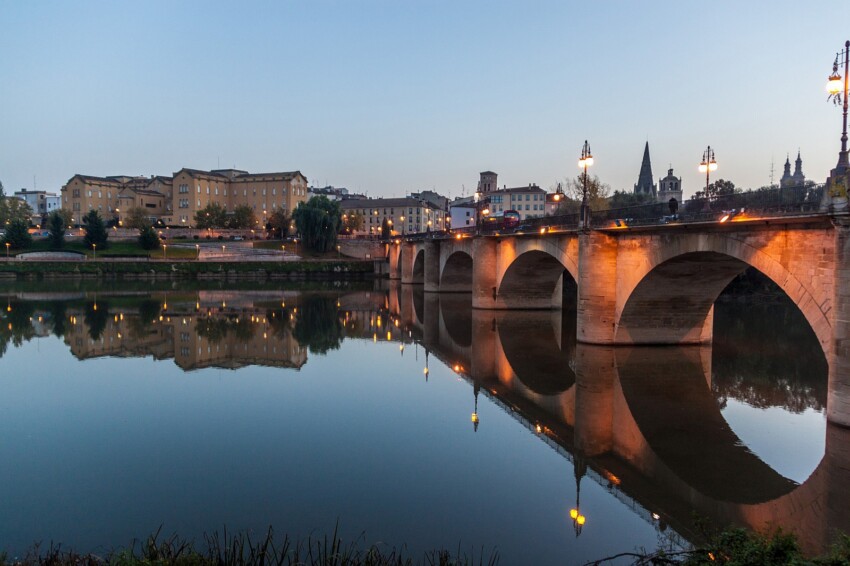

Logroño is a small town in northern Spain located along the Ebro River that has always been considered an important crossroads of roads and peoples and is still a famous stop on the Camino de Santiago. First dominated by the Celts and Romans, of whom numerous testimonies remain, Logroño was later occupied by the Arabs. The city was later ‘liberated’ and partially destroyed in 1092 by the legendary Cid Campeador, Rodrigo Diaz De Vivar.
Due to its strategic location, Logroño became an important centre from the earliest times, so much so that in 1431 King John II of Castile granted it the title of ‘city’. Over the years, Logroño underwent an urban development that saw part of the city walls demolished in order to expand its city centre more and more. In 1521, the city made history for the resistance that Captain Vélez de Guevara organised against the occupation by French troops. Logroño was a privileged location due to its geographical position and was highly developed both economically and culturally.
Over the years Logroño continued to grow until it became a point of reference for the territories of the area, so that as early as 1833 the city became the capital of the so-called Province of Logroño. Since 1982, Logroño has been the capital of the Autonomous Community of La Rioja, the smallest of Spain’s 17 Autonomous Communities, and is a city that has been able to invest heavily in the development of the agricultural, industrial and also tourism sectors.
The best way to explore Logroño is to take time to walk its narrow streets, admire its churches and visit its squares. The city also boasts a wide range of restaurants, tapas bars and wine cellars where you can taste Rioja wine, the first Spanish wine to be awarded the category of ‘calificada origin’ designation.
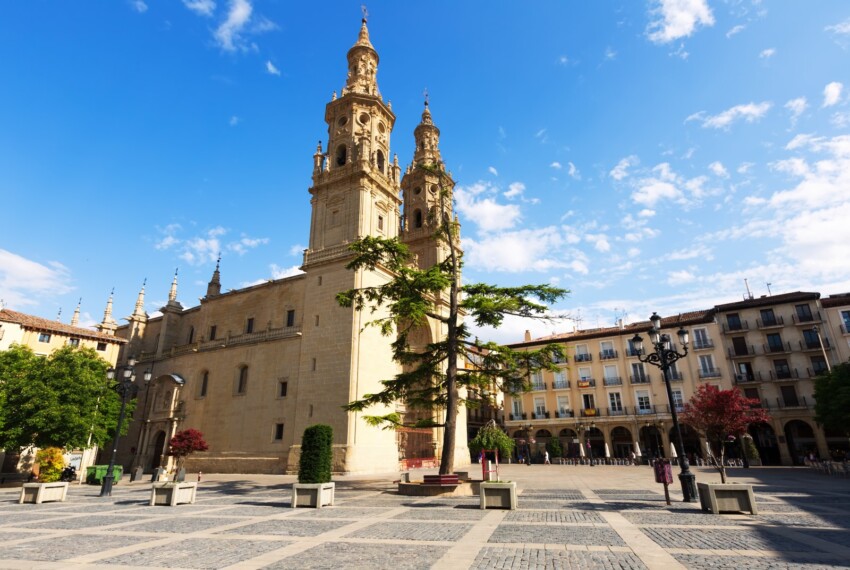
The Co-Cathedral of Santa Maria de La Redonda stands on the site of a former Romanesque church. What we can see now is a 16th century church, although several alterations were carried out between the 17th and 18th centuries, such as the enlargement of the presbytery and the addition of the Chapel of the Angels. It is a church with three naves of equal height, separated by large columns and covered with star vaults. Externally, the façade has a large central baroque doorway and two towers on either side: on the north wall is the tower of San Pedro and on the south the tower of San Pablo.
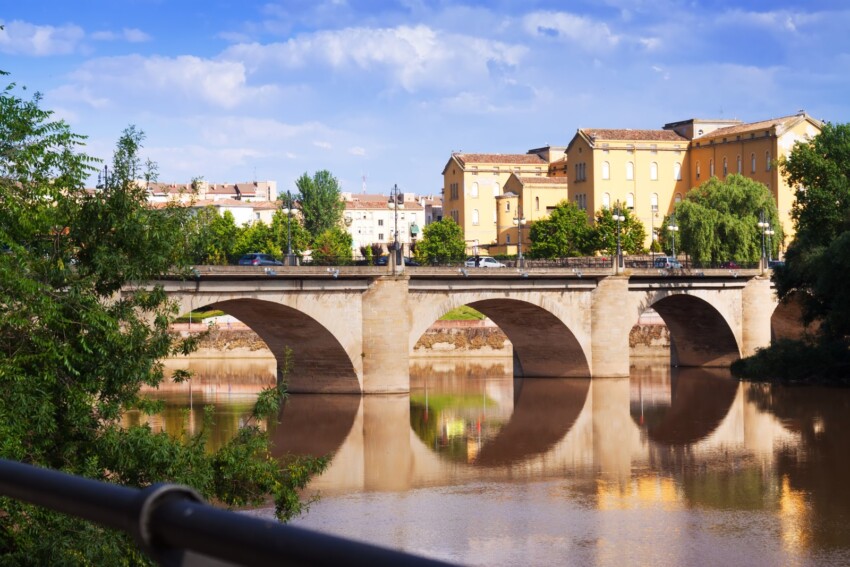
A true access point to the city for those who are walking the Pilgrim’s Way to Santiago, the Stone Bridge is one of the four bridges that allow one to cross the river Ebro and enter Logroño. The bridge is one of the symbols of Logroño, so much so that it is also present in the city’s coat of arms. Also known as the Bridge of San Juan de Ortega, the stone bridge that we can see now is a reconstruction from 1884, which took place after the collapse of the original bridge in 1871.
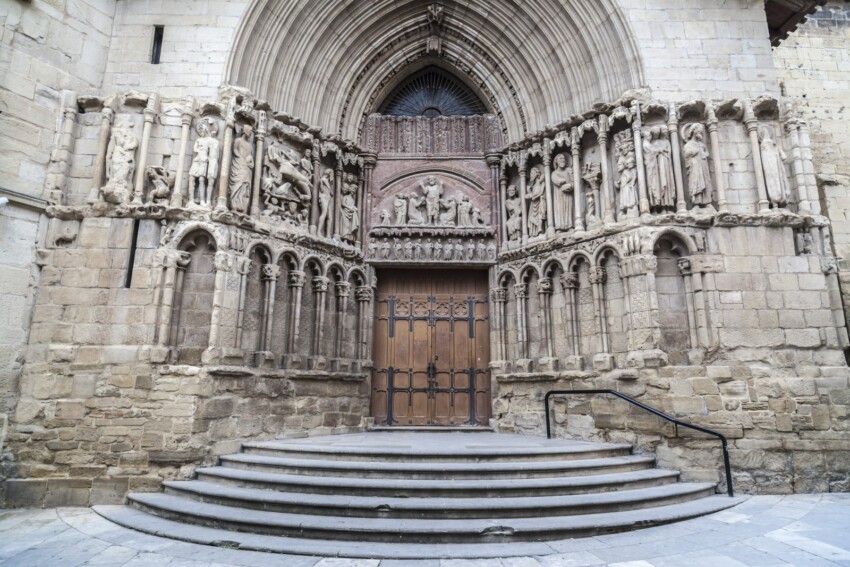
The Church of St Bartholomew is the oldest temple in the city as it was erected around the middle of the 12th century. The cultic site that can be visited now, however, is the result of renovations carried out in the 16th century.
The church currently has a Romanesque plan and inside there are three naves separated by octagonal pillars and covered with star vaults and cross vaults. Inside, it has ashlar walls and is very simple and bare as the main altarpiece and many other religious objects have disappeared over time.
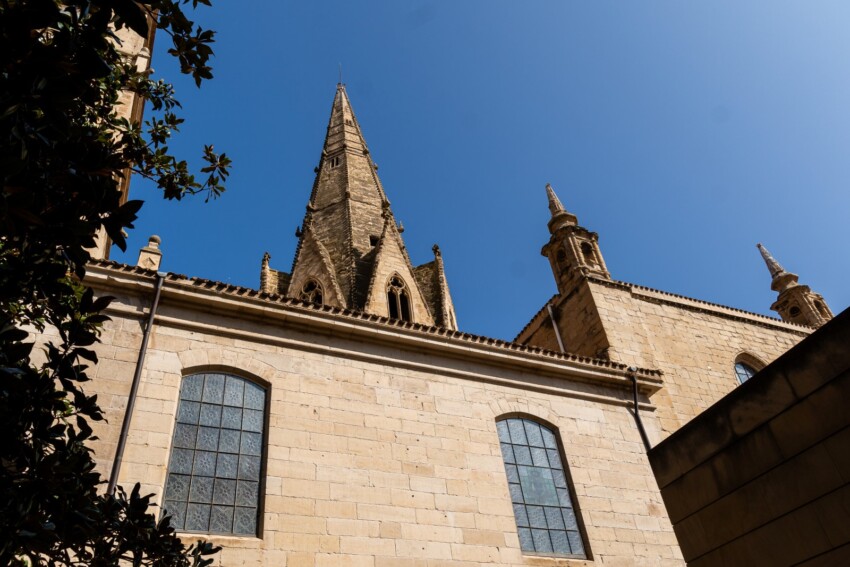
The Church of Santiago is located along the route of the Camino de Santiago, in an area that was previously occupied by another religious building that was destroyed in a fire. The construction of this church began around 1518 and it appears as a building with a single nave, chapels between the buttresses, transept and crypt. In the southern part stands the bell tower that ended with a spire that was destroyed in 1902 due to its excessive weight.
Inside the church is a 17th-century altarpiece with scenes from the life of the apostle Santiago, while in the chapel of St. Helen there are life-size praying busts of Juan and Miguel de Espinosa and between them the family coat of arms. The 17th-century façade, designed with inspiration from the triumphal arch, is decorated with two sculptures of the apostle James.
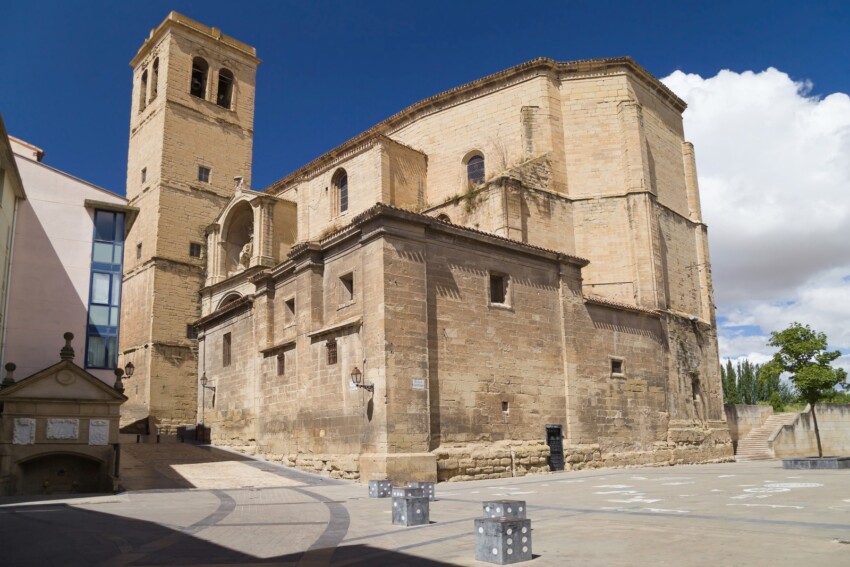
The Imperial Church of Santa María de Palacio was built on the site where there was previously a church known as Santa María la Vieja, founded by the Order of the Holy Sepulchre. It seems that the new religious building was built thanks to a donation by Alfonso VII ‘the Emperor’ in the 12th century.
Inside, there are three naves, transept and no less than three apses. On the north side is the cloister with an irregular plan, which houses paintings of scenes from the life of Jesus by the painter José Vejes in the mid-18th century. Between the cloister and the sacristy is the Antigua Chapel, where you can admire a Baroque altarpiece with an image of the Virgin.
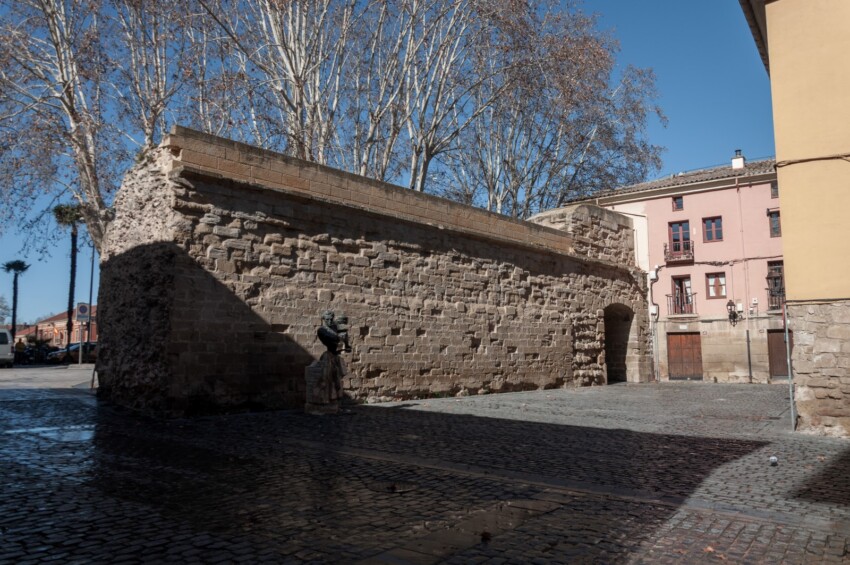
The walls of Logroño that can be admired now are what remains of the fortifications built in the city over the centuries. Indeed, between the 15th and 16th centuries, Logroño was the main Castilian stronghold on the border with Navarre. The Cubo del Revellín (tower located in the northwest corner of the enclosure) and the west gateway (Puerta del Camino) have survived from that period.
The tower is a cylindrical building, the lower part of which housed a powder magazine while the upper part has embrasures for cannons and sights for marksmen. The Puerta del Camino (or Puerta del Ravellín) is a post-wall construction that was probably built at the same time as the bridges across the moat. Above the gate one can see the eagle of Charles I of Spain together with two coats of arms of Logroño.
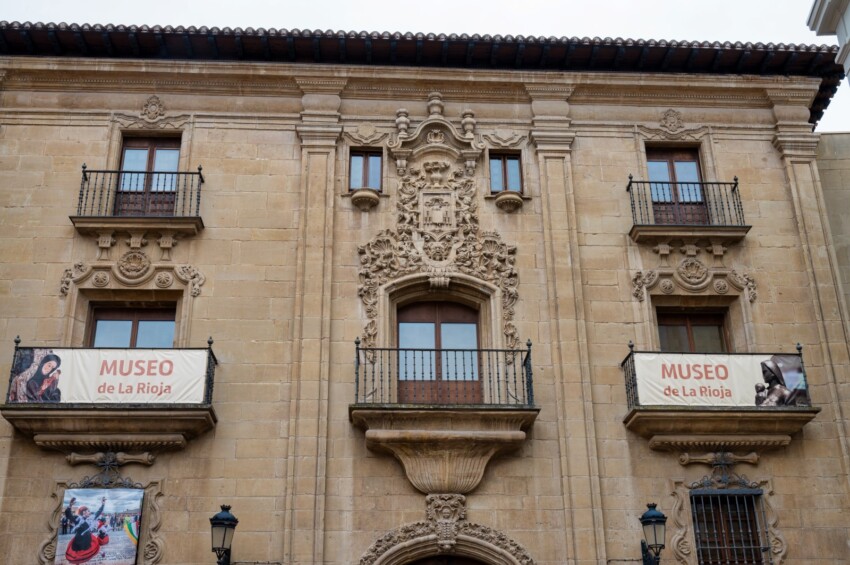
The Museum of La Rioja allows its visitors to learn more about the history and traditions of the autonomous community of La Rioja with exhibits ranging from prehistory to the present day. Housed in the Espartero Palace, a Baroque building dating from the 18th century, its interior displays exhibits from prehistoric and Roman times.
The second floor houses archaeological and fine arts collections from the Middle Ages, Renaissance and Baroque. On the third floor are creations from the 19th century and the first half of the 20th century, with works from the Prado Museum.
In the following map you can see the location of the main places of interest mentioned in this article.
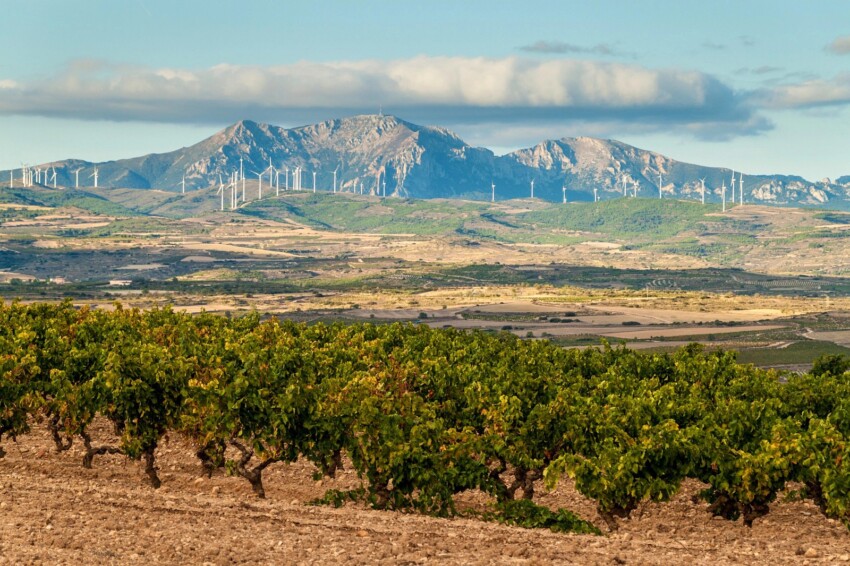
Rioja offers endless possibilities for day trips, with a focus on wine and nature tourism.
The Rioja Wine Route is an itinerary to discover the best wineries in the region. Don’t miss the historic wineries of Haro, the ‘barrio de la estación’ with its centuries-old cellars, and the modern buildings designed by world-renowned architects such as Bodega Ysios. Many wineries offer guided tours with tastings and introduction to oenology courses.
The UNESCO-listed monasteries of Suso and Yuso are located about 50 km from Logroño. These monasteries are considered the cradle of the Spanish language, where the first words in Castilian were written. The monastery complex offers guided tours that allow visitors to discover important medieval manuscripts and the evolution of religious architecture from the 10th to the 18th century.
The Sierra de Cebollera Natural Park, less than an hour from Logroño, offers excellent opportunities for hiking and nature observation. Well-marked trails lead through pine and beech forests, with panoramic views of the Ebro valley and opportunities to observe local wildlife.
Logroño is a very hospitable city with a wide range of accommodation. The city developed touristically in the 1960s when numerous hotels and accommodation facilities sprang up. Now four-star hotels, apartment hotels, hostels, pensions and even a campsite can be found here.
Logroño is an easily accessible city by plane, train, bus or private transport, thanks to its excellent road network. For those travelling by car the main roads leading to the city are the LO-20, the A-12, the A-11 and the AP-68 motorway, which connects Logroño with Bilbao, Pamplona,San Sebastián, Zaragoza, Madrid and Barcelona.
The Logroño-Agoncillo airport is located in the municipality of Agoncillo just over 10 km from the city centre of Logroño. It is a very small airport, with connections only to Madrid and Mallorca, the latter only during the summer season. Those who wish to travel by bus can use the numerous lines that connect Logroño not only to many cities in the Community of La Rioja but also to other major Spanish cities such as Madrid, Alicante, Barcelona, Bilbao, Gijón and Valencia. Logroño has a modern railway station that allows connections to places such as Madrid, Alicante, Barcelona, Bilbao, La Coruña and Zaragoza.
What's the weather at Logroño? Below are the temperatures and the weather forecast at Logroño for the next few days.
Logroño is a municipality in the Autonomous Community of La Rioja, an autonomous community in northern Spain. The city is 85 km from Pamplona, 136 km from Bilbao and 170 km from Zaragoza.